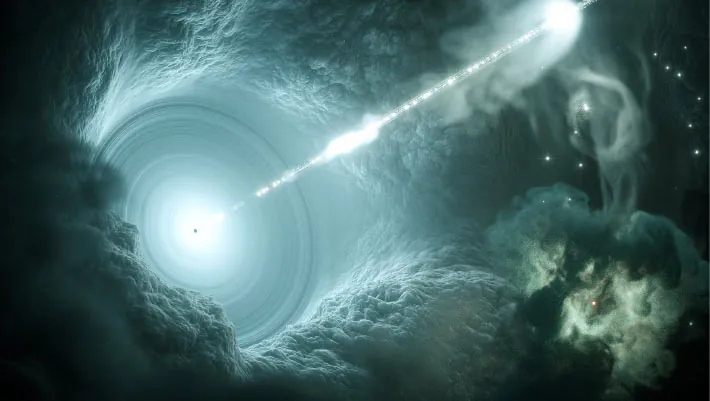
Groundbreaking Discovery: Astronomers Locate the Most Distant Blazar Yet
2025-01-11
Author: Li
Introduction
In an astonishing revelation that is set to alter our understanding of the universe's early years, astronomers have identified the most distant blazar ever known, located at a staggering redshift of 7. Officially designated as VLASS J041009.05-013919.88, this newly discovered cosmic marvel—referred to as J0410-0139—offers a rare window into the era of reionization, a pivotal period in the cosmos when the universe was less than 800 million years old.
Black Hole Characteristics
This powerful astronomical phenomenon is energized by a supermassive black hole, boasting an incredible mass of 700 million solar masses. The multifaceted observations conducted across various wavelengths reveal defining characteristics typical of blazars, which are quasars with jets that are directed towards Earth. These properties include notable radio variability alongside a compact structural formation, as well as distinct X-ray emissions.
Implications of the Discovery
The presence of J0410-0139 not only underscores the existence of such blazars at this early point in cosmic history, but it also suggests that a far larger assortment of jetted sources may lurk in the depths of the early universe, waiting to be discovered. Dr. Eduardo Baños from the Max Planck Institute for Astronomy likens this finding to winning a colossal lottery: 'If you find one blazar pointing directly at us, it’s reasonable to hypothesize that there are countless others that we cannot see.'
His colleague, Dr. Silvia Belladitta, adds to the excitement, stating, 'Where there is one, there are likely hundreds more.' The implications of such discoveries are profound, potentially reshaping our grasp of black hole evolution and the intricate interactions between jets, black holes, and their surrounding environments.
Observational Techniques
Advanced instruments, including NSF’s Very Large Array, Very Long Baseline Array, NASA’s Chandra X-ray Observatory, and the Atacama Large Millimeter/submillimeter Array (ALMA), have confirmed that J0410-0139 is subject to relativistic beaming, a signature trait of blazars. Observations also reveal stable accretion and emissions in regions typical for active black holes, raising tantalizing questions about how these supermassive black holes could accumulate mass so rapidly in the universe's infancy.
Revising Black Hole Growth Models
The implications of J0410-0139's existence invite astronomers to revisit existing models of black hole growth, possibly requiring revisions to incorporate mechanisms like jet-enhanced accretion or obscured super-Eddington growth to correlate these findings with known black hole statistics.
Further Research Opportunities
Dr. Emmanuel Momjian of the National Radio Astronomy Observatory remarked on the significance of this discovery, stating, 'This blazar represents a unique laboratory to examine the interactions between jets and black holes during one of the universe’s most critical epochs.' The jet's alignment with our line of sight allows astronomers an unprecedented view into the inner workings of this extraordinary cosmic engine.
Looking forward, scientists anticipate that ongoing radio surveys will likely reveal additional jetted quasars from this remarkable era, paving the way for deeper insights into the role jets play in shaping galaxies and enhancing the growth of supermassive black holes in the universe’s early days.
Conclusion
Stay tuned as research continues to unfold in respected journals like Nature Astronomy and the Astrophysical Journal Letters, providing us with fresh knowledge and insights into the enigmatic cosmos we inhabit!



 Brasil (PT)
Brasil (PT)
 Canada (EN)
Canada (EN)
 Chile (ES)
Chile (ES)
 Česko (CS)
Česko (CS)
 대한민국 (KO)
대한민국 (KO)
 España (ES)
España (ES)
 France (FR)
France (FR)
 Hong Kong (EN)
Hong Kong (EN)
 Italia (IT)
Italia (IT)
 日本 (JA)
日本 (JA)
 Magyarország (HU)
Magyarország (HU)
 Norge (NO)
Norge (NO)
 Polska (PL)
Polska (PL)
 Schweiz (DE)
Schweiz (DE)
 Singapore (EN)
Singapore (EN)
 Sverige (SV)
Sverige (SV)
 Suomi (FI)
Suomi (FI)
 Türkiye (TR)
Türkiye (TR)
 الإمارات العربية المتحدة (AR)
الإمارات العربية المتحدة (AR)